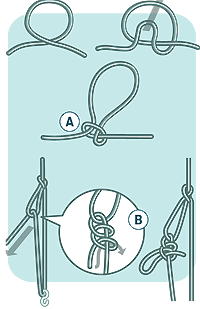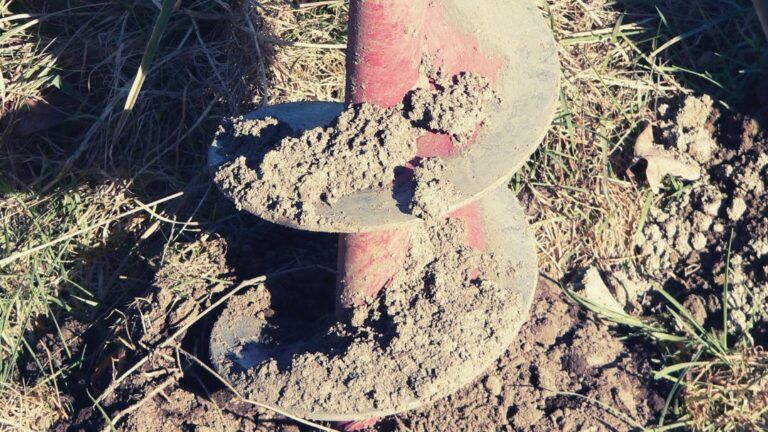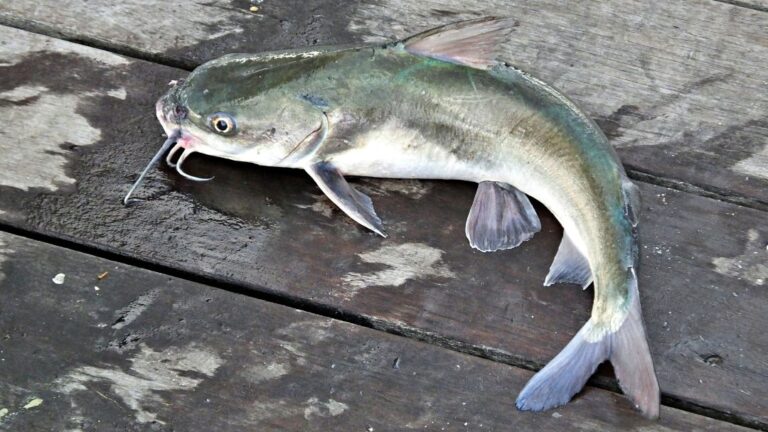How to Tie a Cinch Knot: A Step-by-Step Guide
Tying a cinch knot is simple and useful for many activities. From fishing to securing loads, it’s a skill worth learning.
Knowing how to tie a cinch knot can be a handy tool in various situations. Whether you’re an avid angler, a camper, or just someone who loves the outdoors, this knot can make your life easier. It provides a secure hold and is easy to undo when needed.
In this guide, you will learn the steps to tie a cinch knot efficiently. You will understand why this knot is popular and how it can be used in different scenarios. So, let’s get started and master this essential knot.

Credit: www.backpacker.com
Introduction To Cinch Knot
The cinch knot is a versatile and essential knot for many outdoor activities. Whether you love fishing or camping, this knot will come in handy. It’s simple to learn and has many uses. In this blog post, we will explore what a cinch knot is and how to tie it.
What Is A Cinch Knot?
A cinch knot is a strong, reliable knot used in various outdoor activities. It is also known as the “clinch knot” in fishing. This knot secures a rope or line to an object. It is often used to attach hooks, lures, or other items.
Uses Of Cinch Knot
The cinch knot has many practical uses. Fishermen use it to tie fishing lines to hooks and lures. Campers use it to secure tents and tarps. Hikers may find it useful for securing gear to backpacks. Boaters often use it for tying ropes to cleats or other anchor points.
This knot is also popular in crafts and DIY projects. It is strong and easy to tie, making it ideal for many tasks. The cinch knot is a valuable skill for anyone who enjoys outdoor activities.
Materials Needed
Before you start tying a cinch knot, gather all the necessary materials. Having the right tools and rope ensures a strong and reliable knot. Below is a detailed list of what you need.
Essential Tools
- Scissors: Sharp scissors help you cut the rope cleanly.
- Measuring Tape: Measure the rope length accurately.
- Gloves: Protect your hands while working with rope.
Recommended Rope Types
The type of rope you use affects the knot’s strength and durability. Here are some recommended types:
| Rope Type | Characteristics |
|---|---|
| Nylon Rope | Strong, flexible, and resistant to abrasion. |
| Polyester Rope | Durable, low stretch, and UV resistant. |
| Paracord | Lightweight, versatile, and high tensile strength. |
Choose the rope based on your specific needs. The right rope ensures your cinch knot holds well under pressure.
Preparing The Rope
Preparing the rope is a crucial step before tying a cinch knot. Proper preparation ensures the knot holds securely and performs its function effectively. Let’s break down the process into two main steps.
Cutting The Rope
First, measure the required length of the rope. Use a sharp knife or scissors to cut it. Make sure the cut is clean and even. Frayed ends can cause problems later. If the rope is synthetic, consider melting the ends slightly. This prevents unraveling and keeps the rope neat.
Straightening The Rope
Next, straighten the rope to remove any kinks or twists. Lay the rope on a flat surface or hang it. Gently pull and stretch it along its length. This makes the rope easier to handle and ensures the knot forms correctly. A straight rope also looks more professional and neat.
Starting The Knot
Learning how to tie a cinch knot starts with mastering the initial steps. This guide will break down the process into simple stages, ensuring you get it right every time. The first step is starting the knot. Let’s dive in and take a closer look at each part.
Creating The Loop
First, take your line and create a loop. Make sure the loop is large enough to work with. Hold the loop between your fingers. This step is crucial for forming the basis of the cinch knot.
Positioning The Tag End
Next, position the tag end of the line. The tag end is the loose end of the line. Pass it through the loop you created. Pull the tag end so it extends beyond the loop.
| Step | Action |
|---|---|
| 1 | Create a loop with your line. |
| 2 | Position the tag end through the loop. |
Ensure the tag end is positioned correctly. This ensures a strong and reliable cinch knot. Pay attention to these initial steps for a secure knot every time.
Forming The Wraps
Learning how to tie a cinch knot can be easy and fun. This knot is useful for securing loads or tying down gear. The key to a strong cinch knot is forming the wraps correctly. Let’s break it down into simple steps.
First Wrap
Start with the first wrap. Hold the rope in your right hand. Pass the end of the rope around the object. Bring the end back to you. This forms the first loop. Make sure the loop is tight.
Multiple Wraps
Next, create multiple wraps. Repeat the same process. Pass the rope around the object again. Keep the wraps close together. This will add strength to your knot. Usually, 4-6 wraps are enough. Each wrap should be snug and secure.
Use these tips to create strong, reliable knots. Practice until it feels natural. Soon, tying a cinch knot will be second nature.

Credit: www.youtube.com
Securing The Knot
Securing the cinch knot is crucial to ensure it holds under pressure. This section guides you through the final steps. You’ll learn how to pass the tag end and tighten the knot correctly.
Passing The Tag End
First, take the tag end of the line. Pass it through the loop you created in the previous step. Make sure it goes through the loop completely. This step is vital for a secure knot.
Once the tag end is through the loop, pull it tight. Ensure the tag end is firm but not overly tight. This will help in the next step of securing the knot.
Tightening The Knot
Now, hold the standing part of the line. Begin to pull it slowly. As you pull, the knot will start to tighten. Keep pulling until the knot is snug against the hook or object.
Check the knot for any loose parts. If needed, adjust the tag end and pull again. The knot should be firm and secure. This ensures it won’t slip under pressure.
| Step | Action |
|---|---|
| Passing the Tag End | Pass the tag end through the loop and pull it tight. |
| Tightening the Knot | Pull the standing part to tighten the knot, ensuring it is snug and secure. |
Ensure the knot is properly tightened. This step is key for a reliable cinch knot. Always double-check your work to guarantee the knot’s strength.
Testing The Knot
After learning how to tie a cinch knot, it is crucial to test it. Proper testing ensures the knot’s reliability and strength. This section will guide you through checking the tightness and ensuring the security of your cinch knot.
Checking Tightness
First, verify the knot’s tightness. A loose knot can slip and fail. Follow these steps:
- Gently pull on the working end of the rope.
- Observe the knot as you pull. Ensure it does not loosen.
- If the knot loosens, re-tie it. Make sure each loop is snug.
Tip: Use gloves to protect your hands while pulling the rope.
Ensuring Security
Next, ensure the knot is secure. An insecure knot can be dangerous. Check the following:
- Look for any slips or gaps in the knot.
- Ensure the standing end of the rope is stable.
- Test the knot under load. Apply weight to the rope.
- Observe if the knot holds firm under pressure.
If the knot passes these tests, it is secure. Always test your knots for safety.
Common Mistakes
Tying a cinch knot can be tricky. Many beginners make common mistakes that can compromise the knot’s effectiveness. Learning to avoid these errors ensures your knot holds firm and serves its purpose.
Avoiding Loose Wraps
Loose wraps can weaken your cinch knot. Each wrap must be tight and snug. Loose wraps may come undone under pressure. Always pull the line taut after each wrap. Ensure no gaps are visible between the wraps. Tight wraps create a stronger, more secure knot.
Preventing Slippage
Slippage is a common issue with cinch knots. This happens if the knot is not properly tightened. To prevent slippage, ensure the tag end is firmly pulled. Double-check the knot before putting it to use. A well-secured knot will not slip under tension. Practice tightening the knot until it becomes second nature.
Tips And Tricks
Learning to tie a cinch knot can be tricky at first. But there are some tips and tricks to make the process easier. With a little practice, you can tie this knot quickly and securely. Let’s explore some helpful strategies below.
Practicing The Knot
Start by using a piece of rope or string. It helps you see the knot forming. Practice in good light to see each step clearly. Repeat the steps multiple times. Muscle memory will make tying the knot faster. Practice with different materials. This way, you become comfortable with any type of line.
Using In Different Situations
The cinch knot is versatile. Use it for fishing, camping, or securing loads. When fishing, ensure the knot is tight. This prevents the fish from escaping. For camping, use it to secure tents or tarps. It holds strong in windy conditions. For securing loads, the cinch knot keeps items in place. This prevents shifting during transport.

Credit: www.trailmeister.com
Frequently Asked Questions
What Is A Cinch Knot Used For?
A cinch knot is commonly used for securing loads, tying fishing lines, and attaching ropes to objects. It’s strong and reliable.
How Do You Tie A Cinch Knot?
To tie a cinch knot, loop the rope around an object, pass the end through the loop, and pull tight.
Is A Cinch Knot Strong?
Yes, a cinch knot is strong and secure. It’s widely used for its reliability and ease of tying.
Can A Cinch Knot Be Untied Easily?
A cinch knot can be untied easily by pulling the loose end. It’s practical for temporary bindings.
Conclusion
Learning to tie a cinch knot is easy and useful. Practice makes perfect. With this skill, you can secure your loads well. It works great for fishing, camping, and other activities. Remember to pull the knot tight. This ensures it holds firm.
Share this knot-tying skill with friends. They will find it helpful too. Happy knot tying!




